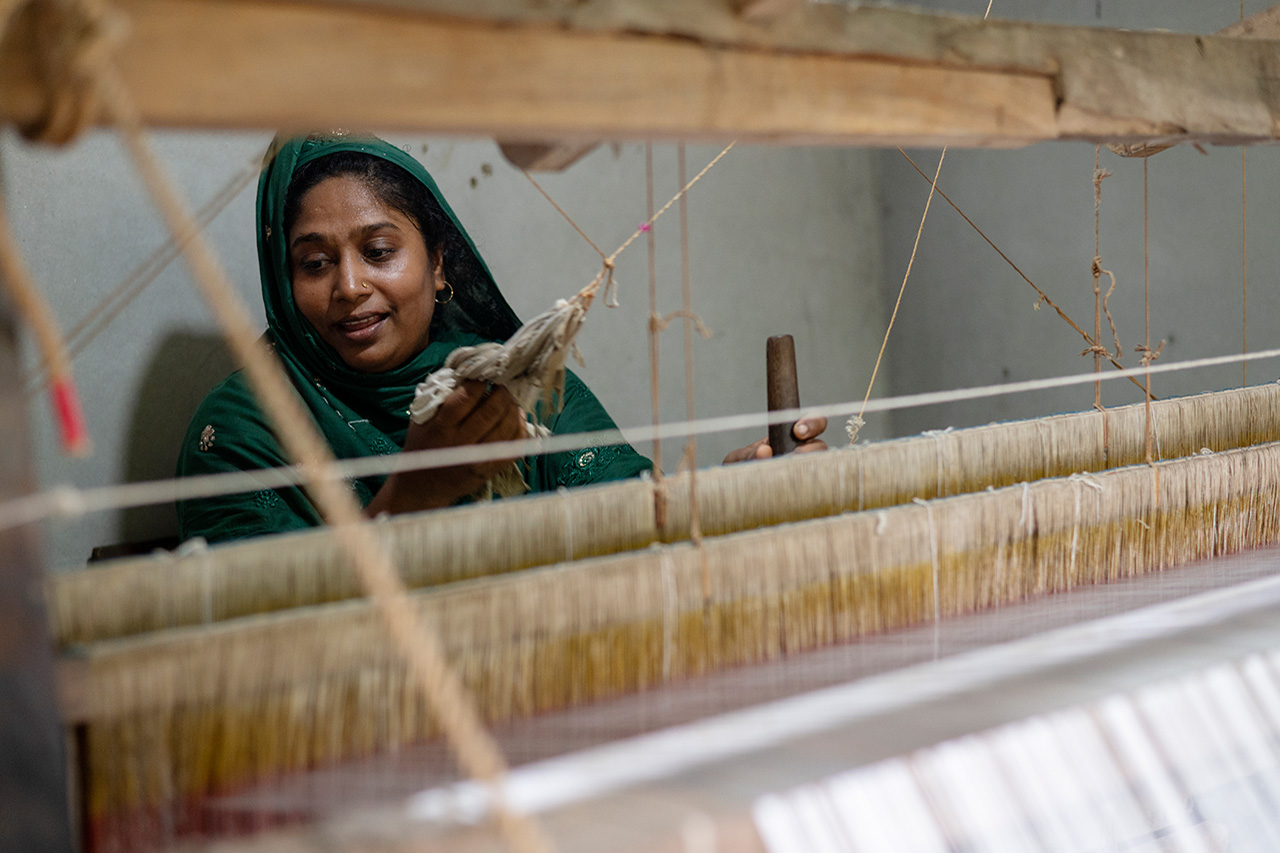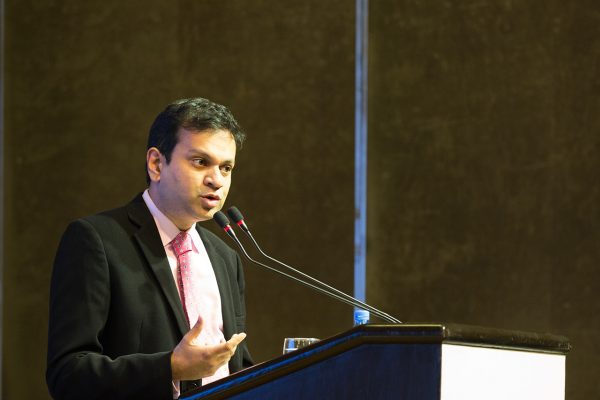Artificial limbs change lives: Here’s how we can scale them up in low-income countries
Reading Time: 5 minutes
Roksana Khatun lost her right leg when the building she was working in collapsed on top of her. The Rana Plaza building collapse in Bangladesh was the deadliest accidental structural failure in modern human history, killing almost 1200 people and injuring thousands more. Rokhsana didn’t think she’d ever walk, let alone work, again. Today, armed with a prosthetic leg, she is not only back in the workforce, but is earning more than what she made in Rana Plaza. Her story is emblematic of the work of the BRAC Limb and Brace Centre, which has equipped 42,000 people in Bangladesh with customised, affordable prosthetic limbs to date.
When Roksana Khatun was pulled from the wreckage of the Rana Plaza factory complex, she had no idea how she was alive. The 18-year-old seamstress had been trapped under twisted steel bars and concrete for nearly 72 hours. But then, as she lay in hospital, her relief turned to horror.
“The doctors told me they would have to cut off my right leg. I wished I had died under the rubble,” she said.
Blessed with a keen eye for design and patterns, Roksana had always loved making clothes. Born in a family of weavers and seamstresses, she knew that she needed both legs to operate machinery. When doctors told her they could not save her right leg, her first thought was, how will I ever work again?
It didn’t take long before the whispering started. ‘She will be a cripple all her life – who will take care of her?’.
The whispers and sideways glances hurt Roksana. They also gave her the strength to fight back.
“I survived Rana Plaza. I decided I wouldn’t let hurtful glances destroy me”.
Finding a way to fight back was far from smooth. She was given a prosthetic leg which wasn’t a good fit and didn’t work for her after just a few months. She wasn’t going to be able to sew without a prosthetic leg though, so she went to a doctor for a second opinion.

Roksana Khatun overcame a factory collapse and an amputation to become a master weaver. © BRAC, 2023.
She received a new, customised prosthetic leg at the BRAC Limb and Brace Centre. But the turning point, in her view, was a four-day training on the use of prosthetic limbs and coping with life beyond limb loss.
“It completely changed my way of thinking,” she said.
She practised with her new leg all day that first day – and for every day the week after. It was difficult, but she was determined.
In a few months, Roksana was back on her feet, in more ways than one. She started working on a loom in her hometown Chapai Nawabganj in northwest Bangladesh. Today, she earns more than 18,000 taka ($160) per month weaving cloth, significantly more than her salary in Rana Plaza. Young women in her area come to her for advice and training. So far, she has trained 18 apprentice weavers.
“Best of all, I can create beautiful patterns once more,” she said.
Learning to walk again
Roksana’s story typifies BRAC’s approach to providing prosthetic solutions for people who lose limbs through disease or injury. To be effective, artificial limbs must be customised, affordable and durable. They must be backed up by counselling, physiotherapy and other support that will motivate patients to use them.
Losing a limb is an extremely traumatic experience. It doesn’t just cause a lack of mobility. It has a profoundly negative impact on the physical, mental, economic and social condition of a person and their family.
Globally, approximately 65 million people live with limb amputations, and 1.5 million people undergo amputations every year. As urbanisation and mechanisation increase in Bangladesh, the rate of disability to amputations is likely to rise.
Loss of arms and legs due to workplace injury and motor vehicle accidents is common in Bangladesh. The incidence of lower limb amputation is estimated to be 75 per 100,000 population – more than double the global estimate of 31 per 100,000 people.
BRAC launched the BRAC Limb and Brace Centre nearly 23 years ago, with the dual aim of providing international standard treatment and ensuring that it is affordable. However, its origins can be traced back to 1997, when a young doctor, a BRAC employee, lost his leg in a motorcycle accident.
BRAC’s founder Sir Fazle Hasan Abed was deeply moved by the accident. There were no prosthetic facilities in Bangladesh at the time. So, Sir Fazle arranged for the doctor to have a prosthetic limb fitted from India.
Sir Fazle then arranged a collaboration between BRAC and Dr PK Sethi’s Rehabilitation Centre in India. The BRAC Limb and Brace Centre was born.

A technician manufactures a prosthesis in the BRAC Limb and Brace Centre workshop. Each prosthetic limb is customised according to the patient’s needs. © BRAC, 2023.
Since then, BLBC has provided more than 42,000 people with low-cost, high-quality, user-friendly prosthetics and orthotics services, as well as physiotherapy, counselling and rehabilitation support. Orthotics, also known as braces, are a support mechanism for weakened body parts and are in high demand.
BRAC Limb and Brace Centre’s 24-member team of doctors, rehabilitation specialists, physiotherapists and technicians serves approximately 2,500 patients annually.
When people lose their limbs, depression reinforces the trauma they have faced. After they get a prosthetic limb, they must relearn the use of their limbs. This means that a patient with an artificial leg has to learn to walk all over again.
If the artificial limb does not fit into their lifestyle, the patient will not use it. A prosthesis designed for a European setting will not suit a farmer living in the chars (river islands) of Bangladesh.
The process usually starts a few weeks after the amputation. A multidisciplinary team, usually consisting of doctors, therapists and technicians, meets with the patient and family members to select the right prosthetic device. Once the patient has made a decision, the limb is made in the centre’s workshop.
A successful fitting is the start of the story – patients then have to visit the centre regularly, because prosthetic limbs need ongoing maintenance. In Roksana Khatun’s case, she drives her loom with her feet, so her prosthetic leg tends to wear out quickly. She visits the BRAC Limb and Brace Centre every few months for maintenance.
Sustainability is key. Between 2002 and 2010, BRAC Limb and Brace Centre received support from the International Committee of the Red Cross in the form of funds, technology and training. Even before that collaboration ended, we decided that we would not depend on donor funds.
BLBC charges the patient a portion of the cost, depending on their socioeconomic condition. This has a double benefit – if the patient contributes to the cost, they are more likely to use the limb. Patients who cannot afford to pay are fitted with limbs free of cost.
Collaboration is part of BRAC’s DNA. “You can’t handle everything yourself,” Sir Fazle used to say.
Today, most of the patients of BRAC Limb and Brace Centre are referred by hospitals. In August 2022, we began a major collaboration with the Sheikh Hasina National Institute of Burn and Plastic Surgery to provide burn survivors with artificial limbs and braces. We opened a new unit with 2,500 square feet of space provided by the hospital.
The Centre faced a different profile of patients at the National Institute of Burn and Plastic Surgery. For example, burn patients need a specialised garment called a pressure garment to reduce scarring. Patients were being exploited by unscrupulous dealers who were charging exorbitant sums for low-quality products. At the hospital’s request, BRAC Limb and Brace Centre imported raw materials and started producing pressure garments in a few months.
The centre’s work is not without challenges. The high tax on raw material, most of which has to be imported, is a significant ongoing cost. Unscrupulous service providers are another continuous issue.
One particularly exciting aspect is that we have been able to take our insights from Bangladesh to support other countries. After the Haiti earthquake in 2010, I went there with three technicians to open Haiti’s first artificial limb centre. We learnt a lot from the experiences of doctors in Jaipur, India, when we first started, so it was rewarding to pay that forward with doctors in Haiti.
Dr Shahinul Hoque Ripon is the Head of BRAC Limb and Brace Centre and Programme Head at BRAC Health Programme.





